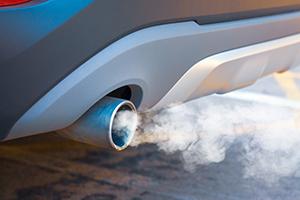
1950-1990
- California develops regulatory foundation for monitoring air pollution and setting emissions regulations on vehicles.
- Governor Ronald Reagan signs into law the Mulford Carell Air Resources Act of 1967 creating the California Air Resources Board (CARB)
- Federal Air Quality Act of 1967 allows California to set stricter vehicle emission control standards than federal law, paving the way for the state to become the nation’s leader in determining air quality standards and vehicle emission regulations.
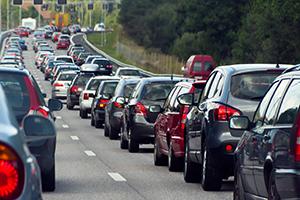
1990
- California Air Resources Board (CARB) first adopts the Low Emission Vehicle Regulation and creates a biennial forum for ZEV policy discussion.
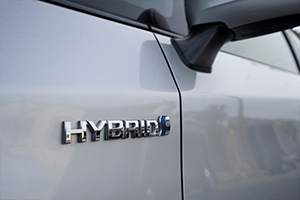
2000 - 2010
- Commercialization of electric vehicles through the rising popularity of the Toyota Prius, Tesla Roadster, Chevy Volt, and Nissan Leaf.
- Governor Schwarzenegger signs Executive Order S-7-04 in 2004 designating a highway network for hydrogen fueling stations and signs into law Assembly Bill 32 Global Warming Solutions Act of 2006 directing CARB to create a plan to reduce greenhouse gas (GHG) emissions.
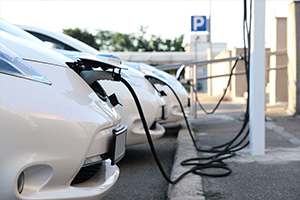
2012
- Governor Brown signs Executive Order B-16-12, setting goal of 1.5 million ZEVs on the road by 2025.
- CARB adopts Advanced Clean Cars I to regulate criteria pollutants and greenhouse gas emission standards for new passenger vehicles.
- 1% of new vehicles sold are ZEVs.
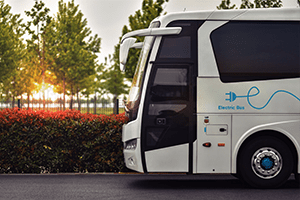
2018
- Governor Brown signs Executive Order B-48-18 updating ZEV goal to 5 million by 2030 and spurring infrastructure investments.
- Governor Brown sets new statewide goal to achieve carbon neutrality by 2045 and achieve net negative emissions thereafter through Executive Order B-55-18.
- CARB adopts Innovative Clean Transit regulation to gradually switch transit agency bus fleets to100% zero-emissions and encourages last-mile connectivity and improved mobility for transit riders.
- 7% of new vehicles sold are ZEVs.

2020
- Governor Newsom signs Executive Order N-79-20 to phase out gas-powered passenger vehicles by 2035 and medium to heavy-duty vehicles by 2045.
- Historic multi-year ZEV Budget Package is approved by Governor Newsom and the California Legislature.
- CARB adopts Advanced Clean Trucks requiring all truck manufacturers to transition from diesel to zero-emissions beginning in 2024.
- 8% of new vehicles sold are ZEVs.

2021
- CARB adopts Clean Miles Standard to cut vehicle emissions from Transportation Network Companies (TNCs) like Uber and Lyft.
- 12% of new vehicles sold are ZEVs.

2022
- Assembly Bill 1279 The California Climate Crisis Act is signed into law and codifies the policy of the state to achieve carbon neutrality as soon as possible, but no later than 2045.
- CARB adopts Advanced Clean Cars II regulation to rapidly scale down emissions of light-duty passenger cars, pickup trucks and SUVs.
- CARB adopts Scoping Plan, a sector-by-sector roadmap for California to achieve carbon neutrality by 2045 or earlier pursuant to AB 32 of 2006.
- 19% of new vehicles sold are ZEVs.
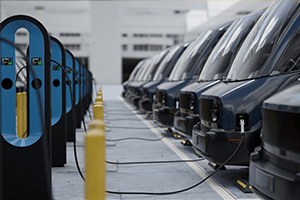
2023
- CARB adopts Advanced Clean Fleets to achieve a zero-emission truck and bus California fleet by 2045 everywhere feasible.
- CARB adopts In-Use Locomotive regulation to reduce locomotive and railyard emissions.
- 25% of transit agency bus fleet purchases are ZEBs.
- 25% of new vehicle sold are ZEVs.

2026
- 50% of transit agency bus purchases will be ZEBs.
- 35% of new light-duty passenger vehicle sales will be ZEV.
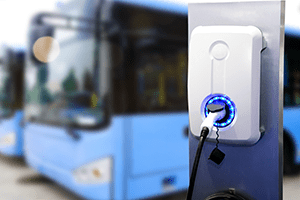
2029
- 100% of bus purchases by transit agencies will be zero emission buses (ZEB)
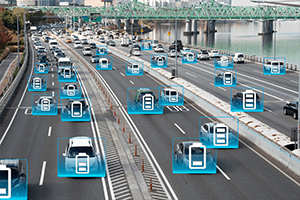
2030
- 68% of new light-duty passenger vehicle sales will be ZEV.
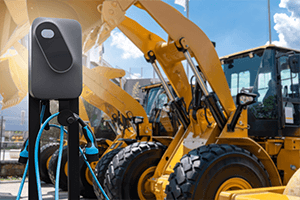
2035
- 100% of new light-duty vehicle sales will be ZEV and 100 % of off-road vehicles and equipment transitioned to ZEV technology.
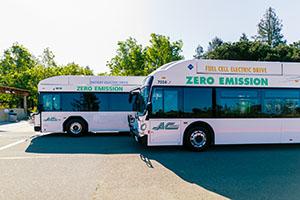
2040
- Full transition of transit agency bus fleets to ZEBs

2045
- 100% of medium- and heavy-duty vehicles in the State will be zero-emission by 2045
- California achieves carbon neutrality.

1950s-1990s
- California develops regulatory foundation for monitoring air pollution and setting emissions regulations on vehicles.
- Governor Ronald Reagan signs into law the Mulford Carell Air Resources Act of 1967 creating the California Air Resources Board (CARB)
- Federal Air Quality Act of 1967 allows California to set stricter vehicle emission control standards than federal law, paving the way for the state to become the nation’s leader in determining air quality standards and vehicle emission regulations.

1990
- California Air Resources Board (CARB) first adopts the Low Emission Vehicle Regulation and creates a biennial forum for ZEV policy discussion.

2000 - 2010
- Commercialization of electric vehicles through the rising popularity of the Toyota Prius, Tesla Roadster, Chevy Volt, and Nissan Leaf.
- Governor Schwarzenegger signs Executive Order S-7-04 in 2004 designating a highway network for hydrogen fueling stations and signs into law Assembly Bill 32 Global Warming Solutions Act of 2006 directing CARB to create a plan to reduce greenhouse gas (GHG) emissions.

2012
- Governor Brown signs Executive Order B-16-12, setting goal of 1.5 million ZEVs on the road by 2025.
- CARB adopts Advanced Clean Cars I to regulate criteria pollutants and greenhouse gas emission standards for new passenger vehicles.
- 1% of new vehicles sold are ZEVs.

2018
- Governor Brown signs Executive Order B-48-18 updating ZEV goal to 5 million by 2030 and spurring infrastructure investments.
- Governor Brown sets new statewide goal to achieve carbon neutrality by 2045 and achieve net negative emissions thereafter through Executive Order B-55-18.
- CARB adopts Innovative Clean Transit regulation to gradually switch transit agency bus fleets to100% zero-emissions and encourages last-mile connectivity and improved mobility for transit riders.
- 7% of new vehicles sold are ZEVs.

2020
- Governor Newsom signs Executive Order N-79-20 to phase out gas-powered passenger vehicles by 2035 and medium to heavy-duty vehicles by 2045.
- Historic multi-year ZEV Budget Package is approved by Governor Newsom and the California Legislature.
- CARB adopts Advanced Clean Trucks requiring all truck manufacturers to transition from diesel to zero-emissions beginning in 2024.
- 8% of new vehicles sold are ZEVs.

2021
- CARB adopts Clean Miles Standard to cut vehicle emissions from Transportation Network Companies (TNCs) like Uber and Lyft.
- 12% of new vehicles sold are ZEVs.

2022
- Assembly Bill 1279 The California Climate Crisis Act is signed into law and codifies the policy of the state to achieve carbon neutrality as soon as possible, but no later than 2045.
- CARB adopts Advanced Clean Cars II regulation to rapidly scale down emissions of light-duty passenger cars, pickup trucks and SUVs.
- CARB adopts Scoping Plan, a sector-by-sector roadmap for California to achieve carbon neutrality by 2045 or earlier pursuant to AB 32 of 2006.
- 19% of new vehicles sold are ZEVs.

2023
- CARB adopts Advanced Clean Fleets to achieve a zero-emission truck and bus California fleet by 2045 everywhere feasible.
- CARB adopts In-Use Locomotive regulation to reduce locomotive and railyard emissions.
- 25% of transit agency bus fleet purchases are ZEBs.
- 25% of new vehicle sold are ZEVs.

2026
- 50% of transit agency bus purchases will be ZEBs.
- 35% of new light-duty passenger vehicle sales will be ZEV.

2029
- 100% of bus purchases by transit agencies will be zero emission buses (ZEB)

2030
- 68% of new light-duty passenger vehicle sales will be ZEV.

2035
- 100% of new light-duty vehicle sales will be ZEV and 100 % of off-road vehicles and equipment transitioned to ZEV technology.

2040
- Full transition of transit agency bus fleets to ZEBs

2045
- 100% of medium- and heavy-duty vehicles in the State will be zero-emission by 2045
- California achieves carbon neutrality.

